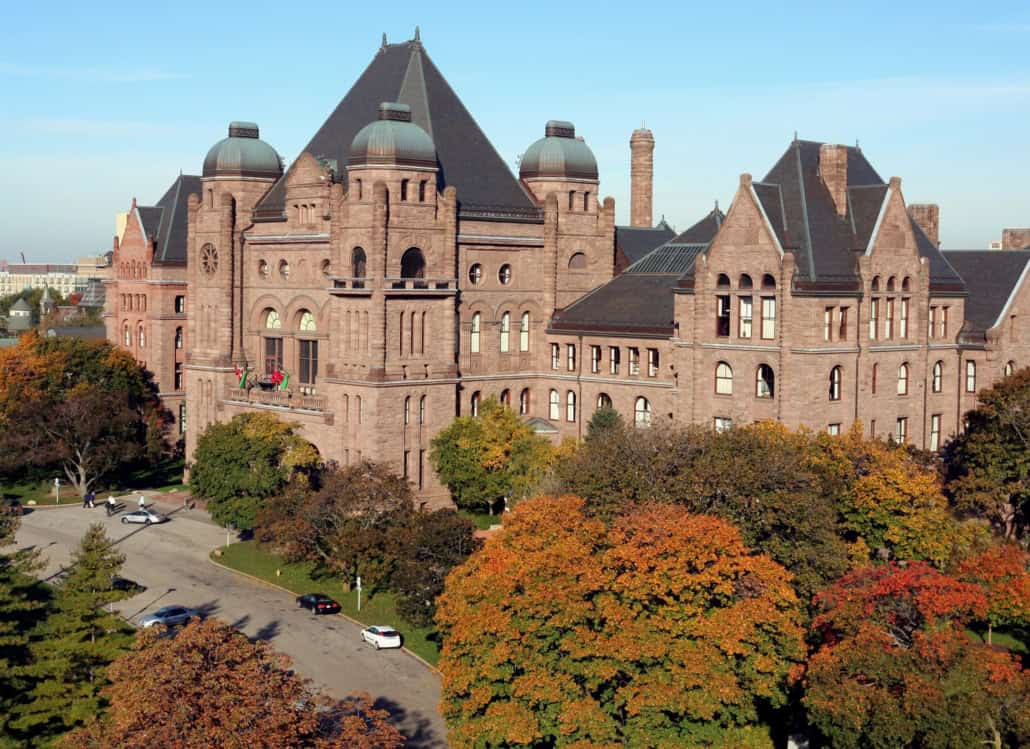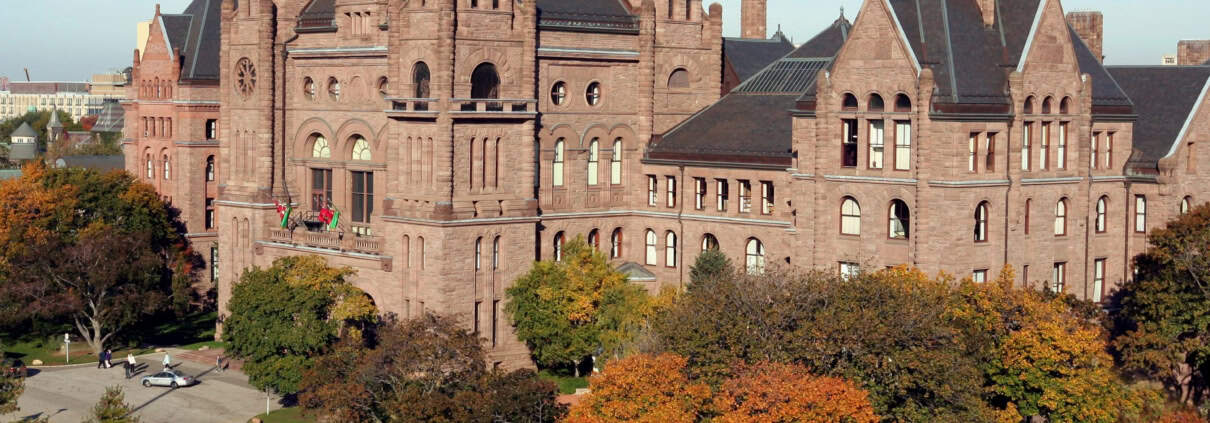2024 Ontario Fall Economic Statement promises $200 rebates, projects better fiscal outlook

The Ontario government yesterday tabled the 2024 Fall Economic Statement, notable for a sunnier fiscal outlook than expected and a promise to line the pockets of Ontarians in advance of a potential early election in 2025.
On the fiscal front, the Ford government was eager to share news that the provincial deficit for the 2024-25 fiscal year is now projected at $6.6 billion, down from previous estimates of $9.8 billion. The deficit is projected to reach $1.5 billion in 2025–26 and to come into a surplus of $900 million in 2026–27. Factors contributing to the good fiscal news, according to Queen’s Park, are better-than-expected revenue and stronger economic growth. Citing potential uncertainty ahead, the government says a ‘fast growth’ scenario could see that deficit drop to $4.2 billion in 2024–25, before reaching a surplus of $6.2 billion in 2025–26 and $11.4 billion in 2026–27. The less-sunny outlook would see the treasury rack up deficits of $8.8 billion in 2024–25, $8.4 billion in 2025–26 and $8.3 billion in 2026–27. Needless to say, the difference between these economic projections is sizeable and opens the door to future fiscal revisions.
While the 2024 budget projected a net debt-to-GDP ratio of 39.2 per cent, the Fall Economic Statement indicates that it will fall to 37.8 per cent in 2024-25. Real GDP growth is projected to reach 1.7 per cent in 2025 from 0.9 per cent in 2024, then climb to 2.3 per cent in 2026 and 2027.
As Minister of Finance Peter Bethlenfalvy noted in the Fall Economic Statement: “Our government’s responsible approach has resulted in an improved fiscal position since the 2024 Budget, allowing us to keep taxes low, invest in infrastructure like roads, highways, hospitals and schools, and provide immediate relief to Ontario families as part of our plan to keep costs down.”
That was the main theme repeated throughout the Fall Economic Statement as the government is expected to take Ontarians to the polls sometime in 2025, well before the end of its current mandate. In advance of that potential election call, Queen’s Park is proposing a headline-grabbing tax rebate measure designed to help Ontarians manage the high cost of living: $200 payments that will be delivered to all eligible taxpayers and children in the province.
To qualify, adult recipients must have filed their 2023 income tax and benefit return by December 31st, 2024, must not have been bankrupt or incarcerated in 2024 and must have been 18 years or older and an Ontario resident as of December 31st, 2023. The rebate would be available to children younger than 18 whose parents qualify for a Canada Child Benefit payment for 2024. Families that did not receive the Canada Child Benefit for 2024 will be able to access the rebate through an alternative process that has yet to be outlined.
A qualifying family with two parents and two children younger than 18, for example, would be eligible to receive $800 under the program.
Queen’s Park estimates that the rebate—currently unfunded—will cost $3 billion and will be delivered to 12.5 million adults and 2.5 million children across the province. While the Fall Economic Statement indicates that cheques will be distributed in early 2025, no firm date has yet been specified. According to the government, higher revenue and “the impact of recent changes to the federal government’s capital gains tax” are factors that will generate the revenue needed to cover the cost of these payments.
Other key highlights from the 2024 Fall Economic Statement include proposals to:
- Extend the province’s temporary gas tax and fuel tax rate cuts. The tax rate on gas and diesel would remain at 9 cents per litre until June 30, 2025.
- Spend $17.7 million in 2026–27 to extend the Ontario Learn and Stay Grant. Under the plan, the grant will be expanded to include undergraduate students that commit to working as family physicians in Ontario upon graduation from a medical residency in the province.
- Commit an additional $150 million over two years to expand the Ontario Fertility Program. The government estimates that the enhanced funding will “… nearly triple the number of individuals who are able to receive a government-funded in vitro fertilization (IVF) cycle, increase the capacity of fertility clinics and reduce waitlists both in hospitals and community settings.” The government also plans to introduce a new tax credit in January 2025, that would support up to 25 per cent of eligible fertility treatment expenses, including IVF cycles, fertility drugs, travel and diagnostic testing. The cost of the tax credit is estimated at $115 million over three years.
- Increase the Ontario Municipal Partnership Fund—a program designed to support program and infrastructure spending by municipalities—by $100 million over two years. Total funding through the program would reach $600 million by 2026.
Although the Ford government is hanging on its fiscally-prudent bona fides—and a stronger economic outlook is helping them make the case—the decision to take on debt to fund taxpayer rebates is sure to raise the eyebrows of many cost-conscious economists. Moreover, that stronger economic outlook may not materialize, as data shows fewer-than-expected housing starts and unemployment trending up since 2023. Put simply, people have less to spend, resulting in a drop in discretionary spending that could ultimately put downward pressure on growth.
Armando Iannuzzi, Co-Managing Partner
For more information on measures announced in Ontario’s 2024 Fall Economic Statement, contact a member of the KRP LLP team today.


